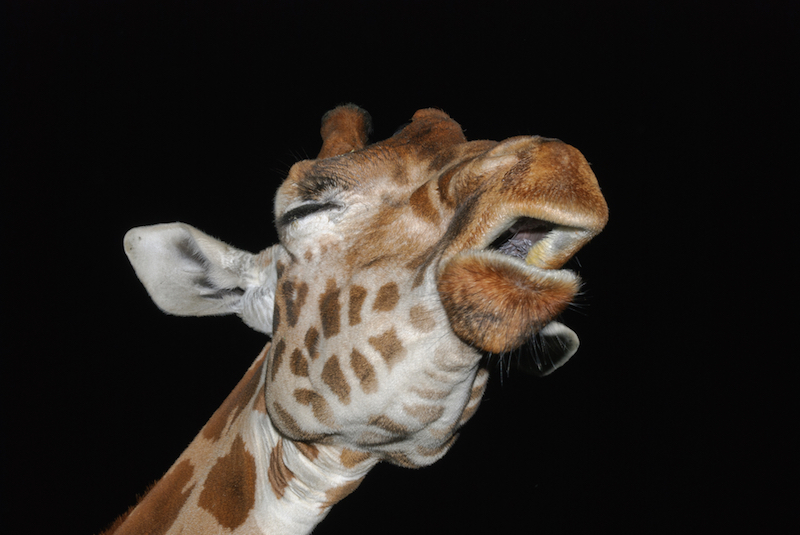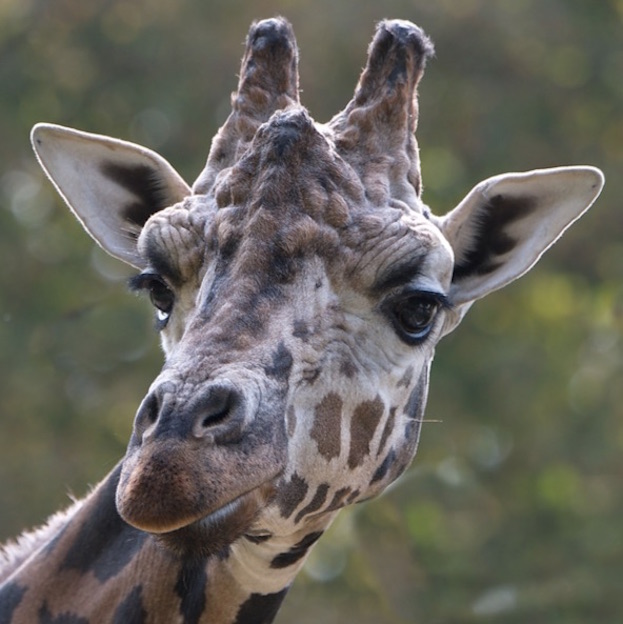Giraffes Caught Humming in the Midnight Hour
Dogs bark, sheep bleat and mice squeak, but what sounds do giraffes make?
They hum, but only during the nighttime, a new study finds.
According to audio recordings of giraffes taken at three European zoos, the long-legged animals sometimes produce "a low-frequency vocalization with a rich harmonic structure and of varying duration" at night, the researchers wrote in the study. [In Photos: See Cute Pics of Baby Giraffes]
It's unclear why giraffes hum, "however, the acoustic structure is interesting, and might indicate that it is a communicative signal," said senior author Angela Stoeger, the head of the mammal communication lab at the University of Vienna. "But future research will have to verify this idea."

Researchers know surprisingly little about giraffe (Giraffa camelopardalis) auditory communication, she said. They are known to make the occasional snort or grunt, but whether giraffes use these vocalizations to communicate is not known, Stoeger told Live Science.
The giraffe's neck may explain why the animal doesn't say much.
"There have been suggestions that the giraffe's iconic long neck makes vocalization physically impossible, due to the difficulty of sustaining the required airflow from lungs to mouth over such a distance," Stoeger told Live Science in an email.
Sign up for the Live Science daily newsletter now
Get the world’s most fascinating discoveries delivered straight to your inbox.
Or maybe giraffes produce sounds in the infrasonic range — much like the rumble of elephants — that are below the threshold of human hearing, she said. But there's inconclusive evidence for this idea, prompting Stoeger and her colleagues to start recording giraffes in an effort to learn more about the noises they make, and whether those noises are used for communication.
To investigate, the researchers recorded a total of 22 giraffes at three European zoos — the Berlin Tierpark, the Copenhagen Zoo in Denmark and the Vienna Zoo. Sometimes, the researchers personally recorded the giraffes, but they relied on autonomous recording devices for the longer night recordings.
The night recordings blew them away. Once the sun sets, some giraffes hum an eerie tune that sounds like a creaking ship, they found. [Listen to the Humming Giraffes]

The researchers didn't take videos of the humming giraffes, so it's unclear exactly what the animals were doing at the time. But Stoeger has a hunch the eerie sound is a method of communication — an idea that needs to be verified in future studies, she said.
"Giraffes have excellent vision and use visual signals for communication a lot," she said. "However, it might be possible that once vision is limited — for example, at nighttime — and they are separated, that they might use vocalizations to keep contact."
The team didn't find any evidence of low-frequency, infrasonic signals. This isn't unexpected, given that giraffes' vocal folds aren't as thick as those of elephants, "so it would be a surprise that the calls of giraffes would be even lower than those of elephants," Stoeger said.
The researchers recorded 65 humming episodes in all, indicating "that acoustic communication is rare," she said. Future work is "urgently needed because compared to other species, we know very little about giraffe communication and behavior in general," Stoeger said.
The study was published online Sept. 9 in the journal BMC Research Notes.
Follow Laura Geggel on Twitter @LauraGeggel. Follow Live Science @livescience, Facebook & Google+. Original article on Live Science.

Laura is the archaeology and Life's Little Mysteries editor at Live Science. She also reports on general science, including paleontology. Her work has appeared in The New York Times, Scholastic, Popular Science and Spectrum, a site on autism research. She has won multiple awards from the Society of Professional Journalists and the Washington Newspaper Publishers Association for her reporting at a weekly newspaper near Seattle. Laura holds a bachelor's degree in English literature and psychology from Washington University in St. Louis and a master's degree in science writing from NYU.









